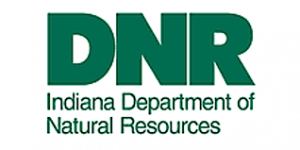The Indiana Department of Natural Resources has announced the confirmation of Indiana’s first positive
The disease acts as a neurological disease that affects white-tailed deer, and the disease eventually leads to the deer’s death. The prositive case is adjacent to a region where the disease had previously been detected in Michigan, and the disease has now been detected in 33 states, including all the states that border Indiana. Department deer biologist Joe Caudell encouraged community members throughout Indiana to remain vigilant and report sightings of the disease to help monitor the spread of the disease as it enters the Indiana borders.
“CWD has been in our region for many years with positive cases in all of our surrounding states,” Caudell said. “The public can help by reporting sightings of sick or dead deer to the DNR, as well as submitting harvested deer for testing during deer hunting season. Through increased awareness and testing, we can work to monitor CWD within Indiana’s deer population.”
Caudell stated that since the disease was previously reported in the Michigan area near the Indiana border, the department expected the disease to eventually spread into Indiana, and the department made a statement that staff will continue to monitor the area for the disease.
While infection in humans has not been reported, the Centers for Disease Control and Prevention issues a recommendation for hunters to have their harvested deer tested before consumption to ensure that the deer is not infected with chronic wasting disease. The center also recommended that hunters refrain from consuming any animal that tests positive for the disease as the effects on humans remains unknown.
The deer that tested positive in Indiana was a male deer harvested by a hunter, and two independent tests confirmed that the deer was infected with the disease. According to the department, the disease is caused by a misfolded prion that causes damage to the animal’s nervous system, and it can spread through deer-to-deer contact or through contaminated environments as it remains in the soil for numerous years. Animals infected with the disease are described as appearing emaciated, showing erratic behavior and exhibiting neurological irregularities. Hunters that may spot a deer that may be infected are encouraged to report the sighting to IN.gov/sickwildlife.
Indiana’s deer hunting seasons typically run from mid-September through January. Although the positive case was reported in LaGrange County, the department encourages hunters in all counties to have harvested deer tested for the disease by dropping the deer’s head off in the freezer outside of a Fish and Wildlife Area or the State Fish Hatchery office or scheduling appointments to bring the deer to a site to be tested.
For the Clinton and Carroll counties area especially, samples may be directly submitted to the Animal Disease Diagnostic Laboratory at Purdue University for a fee.
For more information regarding the disease and its effects on wildlife in the state, visit IN.gov/CWD. The disease has not been reported in Boone, Carroll or Clinton counties as of April 5, but the department continues to encourage precautionary measures for all counties as the disease may spread.
